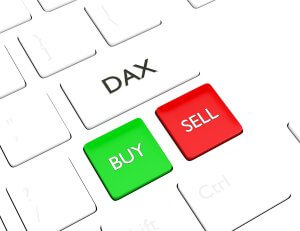Introduction
One of the drawbacks of The Elliott Wave Theory is the challenge that wave-counting imposes to outsiders or rookies. When faced with a real price chart, a novel Elliott Wave trader needs a methodology to classify market movements and correctly label wave patterns, or they will probably be lost in the forest.
There are two ways to a proper wave counting strategy: from bottom to top or top down. I personally favour top down, so it’s the method used here. I like to see the big picture first, and I guess you do too. I think it’s much simpler and helps to avoid counting errors.
Before proceeding to our practical exercise, let’s see the notation. Elliott described nine wave degrees: From the tiniest observable on an hourly chart to the largest available to him. He chose the following names for these degrees from largest to smallest: Grand Supercycle, Supercycle, Cycle, Primary, Intermediate, Minor, Minute, Minuette, Subminuette. The specific way to label waves is not critical as we will see, It’s just an organised labelling system to differentiate between the different wave degrees. Elliotticians are comfortable with this so it is widely used.
Table I: Elliott Wave notation table
Methodology to a Correct Wave Labelling
1. Panoramic View – The Impulsive Wave
Let’s do this using the EUR/USD pair. We’ll begin with the big picture using a monthly chart. We’ll label the major waves and from there we’ll go to daily and hourly charts.
Fig.1 shows the major tops of the monthly chart with orange arrows pointing to major market tops and bottoms. This panoramic view allows the following wave count and we are going to assume the chart shows a cycle view. The main advice, according to all authors, and Elliott himself is to look at relevant movements in size and time length. In figure 1 we observe that the arrows are pointing to tops and bottoms that match that criteria, ignoring all relatively minor tops and bottoms.

Therefore, the first left arrow is the end of wave I, the second arrow marks the end of a wave II, the third arrow corresponds with the end of wave III, which is complex, but fits the pattern. The next arrow is the end of wave IV, and the fifth arrow shows the end of wave V, completing a wave (I) count of a cycle. Fig 2 shows the right labelling:
2. Panoramic View – The Corrective Segment
Now we know the right side of the chart, after the (I), is a correction wave within this super-cycle. So let us focus on that leg and dissect its waves using the same method. Fig. 3 shows the arrows on major tops and bottoms, although they belong to a primary trend, which is one level below a cycle.
There is one possible “major” bottom not pointed by an arrow. The reason is, that bottom is not below the previous bottom. Therefore it’s not a major bottom. That’s important because it produces a different labelling. The way it is, we observe that we have 5 major waves as fig 4 shows:
Therefore, we have ended the wave A of the correction and wave B has started.
3. Getting Closer: Latest Segment on a Daily Chart
Now, let’s go and label the last leg, starting from the end of A, [5], (5) on a daily timeframe. We discern that the main part of the price action is within an impulsive wave of intermediate degree, which ends at about 1.21 and then a corrective phase begins. It is, also the first wave of the primary trend.
Let’s see two possible ways to label it in fig 6.
We recognise that both counts are alike, except in waves (3) and (4). But we notice that the rule stating that wave 3 is never the shortest is violated, therefore, by the green count, it is not valid.
Finally, we are reaching the concluding, unlabelled segment. So let’s label sub-waves in wave (5) and flag the corrective portion as well:
As we observe, the EUR/USD is currently in a wave (C), and within that wave is a moving wave 2 that is close to its end.
4. Going Intraday
We are reaching the final stage. We know that prices are travelling within wave 2 of wave (C), and now we would like to spot where are we within that wave 2. Fig 8 shows the EUR/USD hourly chart with the labels applied using the same method: spotting highs and lows. That shows the locations of waves [i], [ii] and [iii], and by labelling the lower grade highs and lows we can also label the constituent sub-waves.
That shows the EUR/USD has ended Wave [iii] and is currently moving through wave [iv], which, in turn, will give place to the fifth wave, and complete the wave 2 of higher degree, shown in Fig. 7.
From now on, we know that we are bullish and should wait for the end of the current wave [iv] to go long. To get close to where we should expect wave [iv] to finish, we can apply Fibonacci retracement levels, or draw price channels, but in the end, we let the market tell us to use breakouts of the current corrective wave, always applying our reward-to-risk ratio measurements to filter out nonproductive trades.
Conclusions and takeaways:
- An excellent approach to correctly labelling a chart using the Elliott Wave theory is to go to the most extended timeframe and begin marking the mayor super-cycles or cycles of the security.
- To do that we identify significant tops and bottoms and try to apply the respective labels using the rules of the theory.
- Then we continue with the last segment of that timeframe and try to label it.
- In the case where we reach a partial segment, we move to a shorter timeframe, weekly or daily, to place a magnifying glass on that segment. Keeping in mind previous labels, we then proceed to identify the constituents of that segment.
- Now we could continue magnifying and go to daily and intraday timeframes and do the same, labelling minor trends and legs, up to the point when we spot where we are, and the most likely scenario of the movement of prices. That allows to position ourselves with the current trend.
- To find a spot to enter, we may apply Fibonacci retracements or draw price channels.
- We should pull the trigger when we see a confirmation that the main trend resumes.













One reply on “Trading Using The Elliott Wave II – Guide to Wave Counting”
where is the picture/figure?